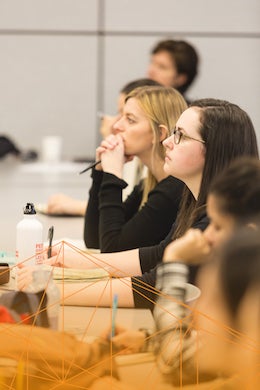Academic calendar
The Academic Calendar is an important resource as it provides you with the rules and regulations governing the MDEI program and you as a student. Be sure to familiarize yourself with this document, and refer to it if you have any questions about academic regulations.
Academic standing
You must obtain an average of at least 70% in the set of courses presented in fulfillment of degree requirements. Those with probationary status will be required to maintain the average as outlined in their offer letter.
Degree requirements

Courses
The program consists of 8 core required courses which can be taken on a full-time or part-time basis:
- DEI 612 Working in Teams 1
- DEI 613 Digital Media Solutions: Design Principles and Practice
- DEI 614 Principles of Marketing in a Globalized World: Leveraging Digital Technology
- DEI 616 Special Topics 1
- DEI 617 Special Topics 2
- DEI 626 User Experience (UX) Fundamentals and User Research
- DEI 623 Digital Media Solutions: Project Management
- DEI 625 Media Innovation and Impact